We may earn a commission when you click on the affiliate links in this post.
Make Panda Express Chow Mein at home in under 30 minutes! This easy, delicious copycat recipe uses simple ingredients for a perfect side dish everyone will love.
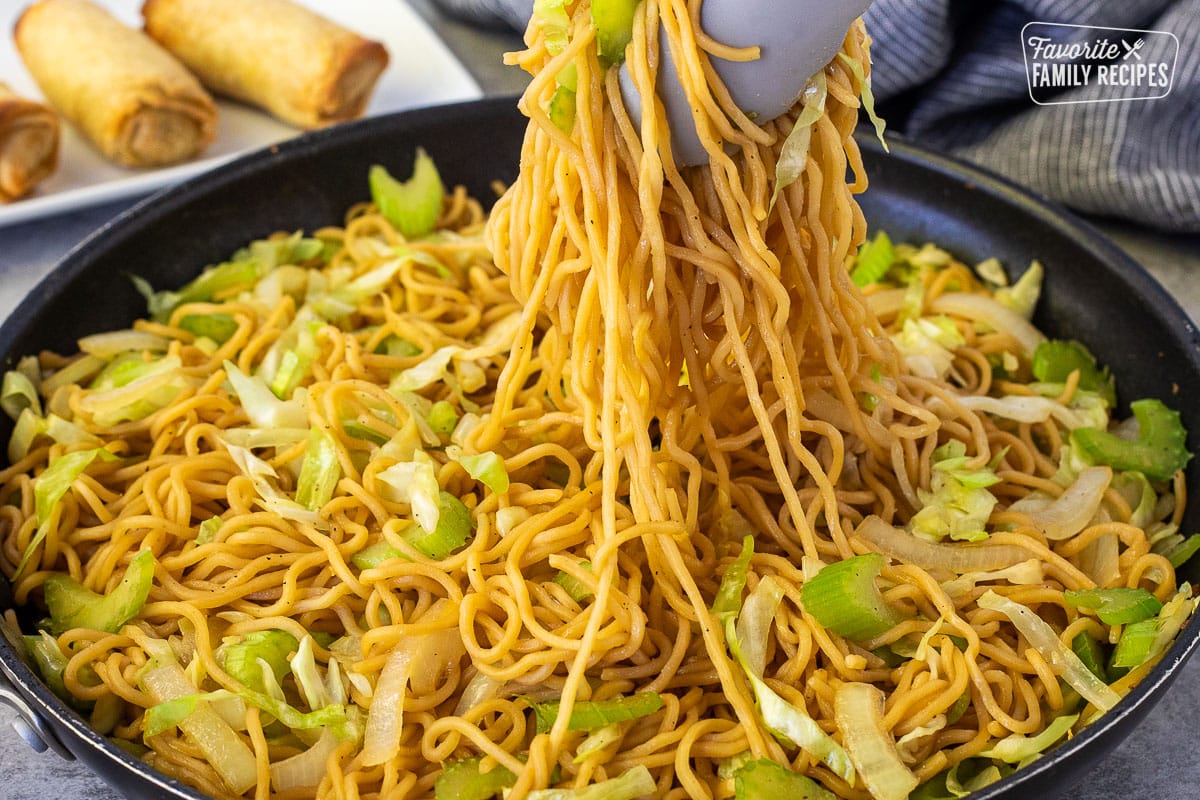
Crave-Worthy Chow Mein in 30 Minutes
Are you as obsessed with Panda Express Chow Mein as I am? I mean, it’s the ultimate sidekick to every entrée on their menu, right? Well, if you’re craving that delicious, savory goodness but want to skip the takeout, I’ve got you covered! This copycat Panda Express Chow Mein recipe is a game-changer, and the best part? You can whip it up in under 30 minutes with ingredients you probably already have in your pantry!
Let me take you back a few years. It was Christmas Eve, and we were hosting our annual Chinese takeout party. But, we weren’t near a Panda Express, and I needed enough chow mein to feed a small army (okay, just my family, but it felt like an army!). So, I decided to create my own version. And guess what? It was a massive hit! Everyone swore it tasted just like the real thing. Don’t just take my word for it—check out the comments below!
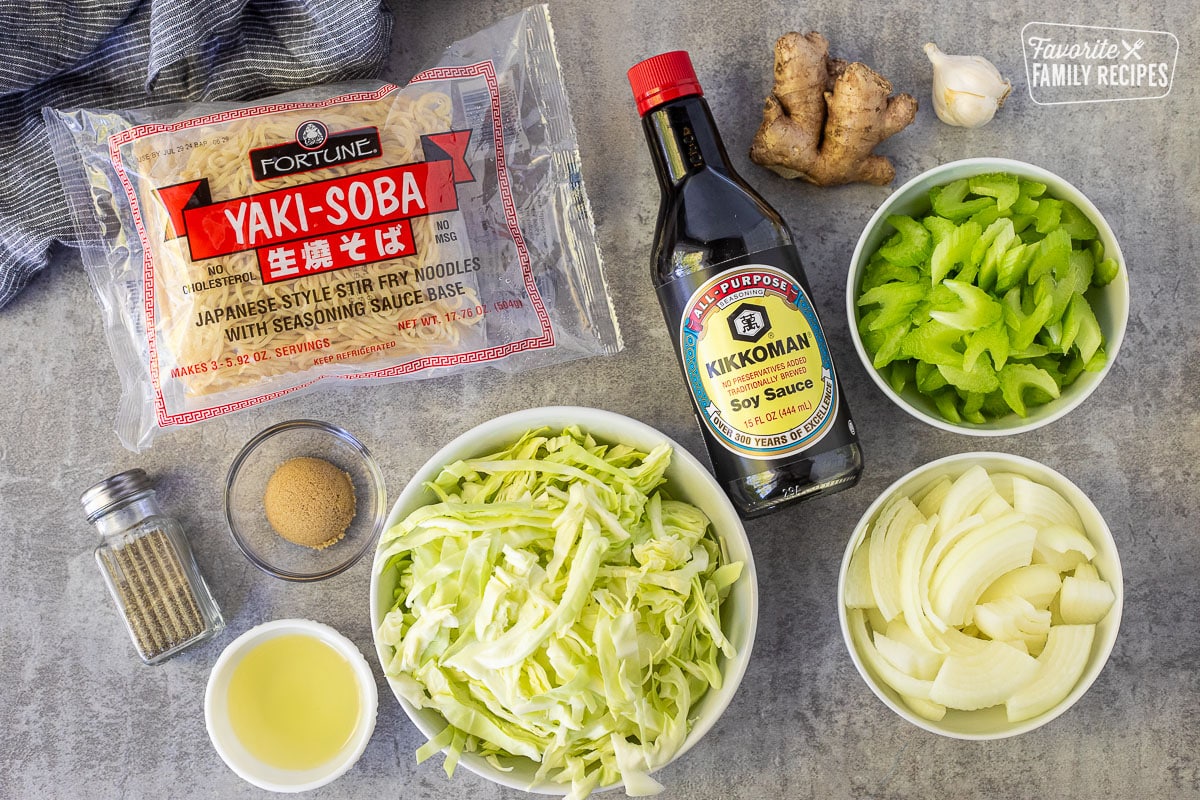
What You’ll Need for Panda Express Chow Mein
One of the reasons I love this recipe is because it’s super simple. Panda Express keeps it straightforward, and so do I! Here’s what you’ll need:
- Chow mein noodles: Prepared according to package instructions. Yakisoba, lo mein, or even undercooked ramen noodles work well too.
- Onion (white or yellow onion)
- Celery
- Cabbage
- Chow Mein Sauce
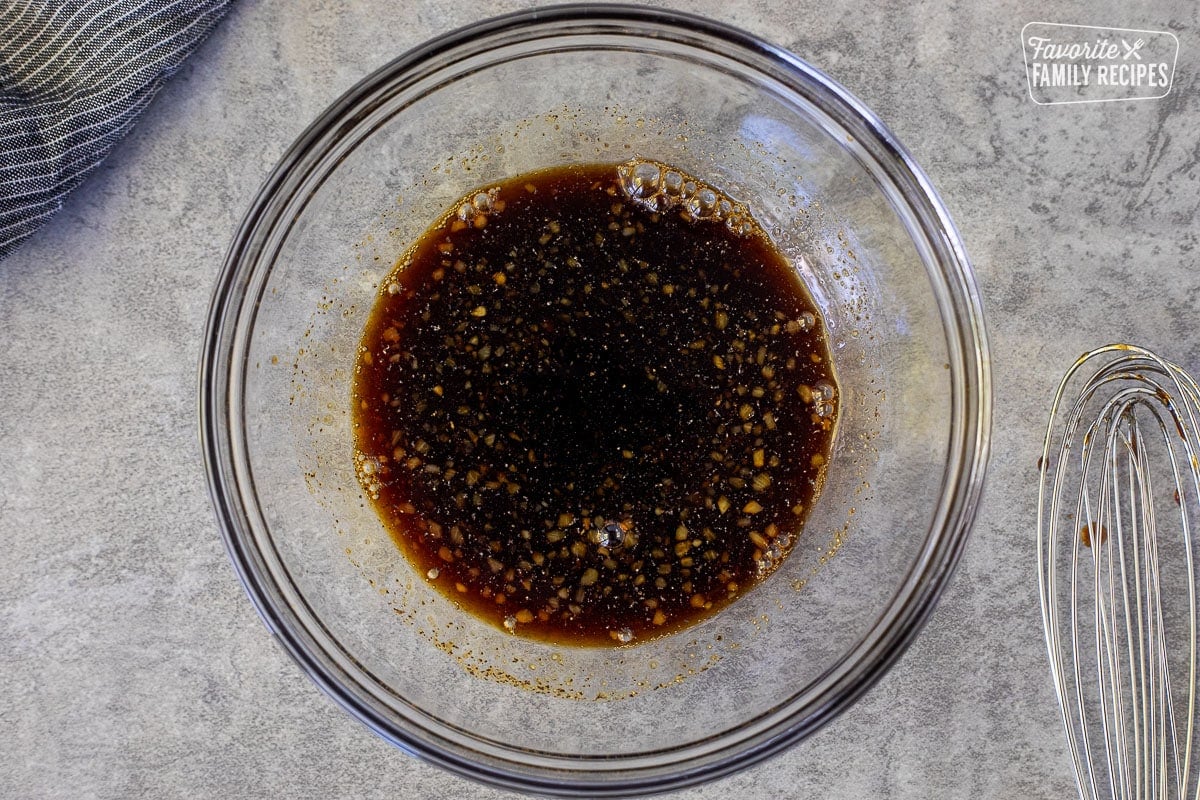
Ingredients for the Chow Mein Sauce:
This chow mein sauce uses only a few simple ingredients:
- soy sauce
- brown sugar
- garlic
- ginger
- black pepper
Want to add a twist? A dash of oyster sauce or a splash of Chinese cooking wine can take the flavor up a notch. For those who prefer a saucier dish, double the sauce recipe and stir in a bit of chicken broth. Heat it up, thicken with cornstarch, and voila!

Chow Mein vs. Lo Mein: What’s the Difference?
Ever wonder what sets chow mein apart from lo mein? The biggest difference is that one is stir-fried and the other is tossed in sauce. Here’s the lowdown:
Chow Mein:
- Translation: “fried” or “stir-fried” noodles.
- Preparation: Parboiled, then stir-fried until crispy.
- Texture: Slightly crispy, a bit oily, not easy to slurp. Some think that chow mein noodles are strictly crunchy, deep fried noodles, like the kind that comes in a canister, but that is only one type of chow mein noodle. The most common kind of chow mein noodle is the stir-fried kind, like what they use at Panda Express.
- Sauce: Minimal sauce.
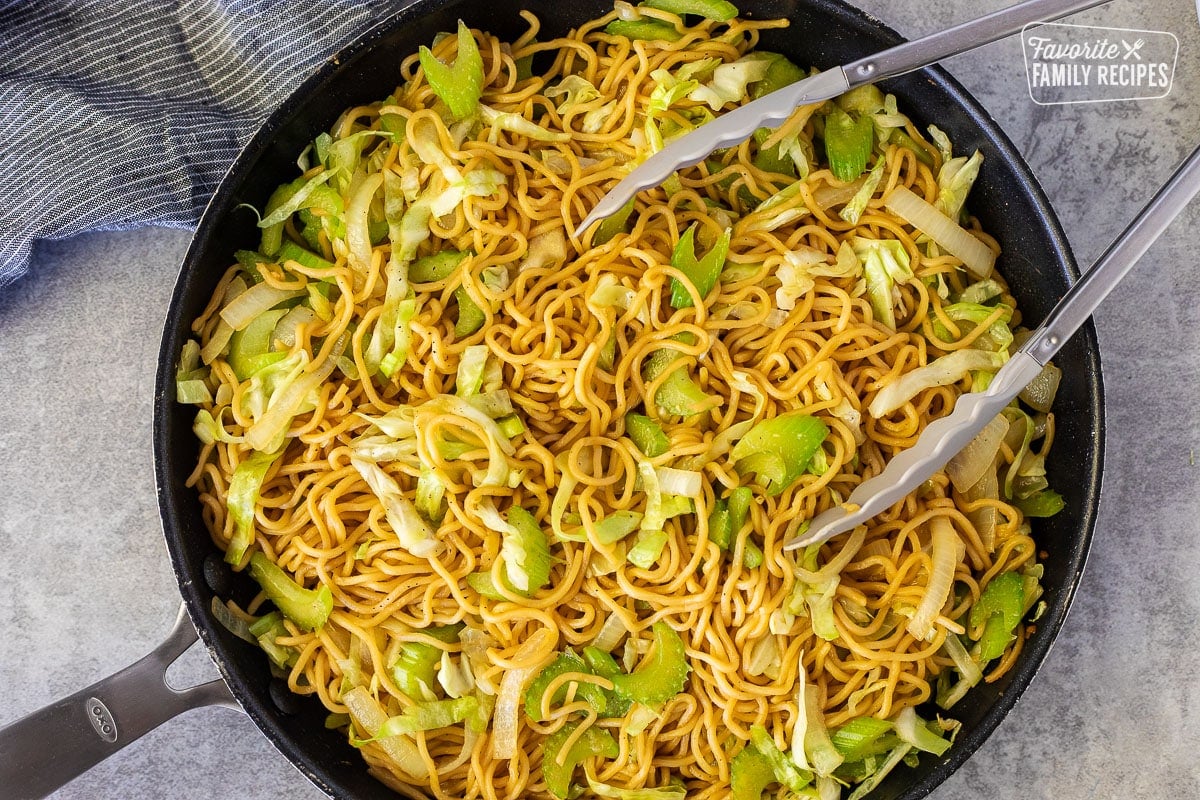
Lo Mein:
- Translation: “tossed” noodles.
- Preparation: Boiled until soft, then tossed with sauce.
- Texture: Soft and slurpable. It feels similar in texture to a spaghetti noodle.
- Sauce: More sauce than chow mein.
Some might argue that Panda Express chow mein is actually lo mein, but based on the stir-fried texture and minimal sauce, it’s definitely chow mein. Trust me, the “slurp test” doesn’t lie!
Now, can you make this recipe a lo mein if you wanted to? Absolutely! It is DELICIOUS as a lo mein! Just boil up your noodles separately and double the sauce. Toss together and serve.
Choosing the Best Noodles
The beauty of this dish is its versatility. Yakisoba noodles are my go-to for the perfect texture, but dry lo mein, ramen, or even spaghetti will do in a pinch. Just remember to stir-fry them for that signature chow mein vibe.
Pro Tips for Perfect Chow Mein
- Leftovers: Store in an airtight container in the fridge for up to 5 days. Reheat on the stovetop, in the microwave, or in the oven.
- Pan Choice: Use a large wok or deep non-stick pan for easy stir-frying.
- Flavor Boost: A touch of sesame oil can add depth, but use sparingly to avoid overpowering the dish.
- Veggie Variations: Feel free to toss in your favorite veggies like carrots, pea pods, or broccoli for extra crunch and color.

Storing and Reheating Chow Mein
Got leftovers? Lucky you! Cool your chow mein to room temp, then store in an airtight container. It’ll keep in the fridge for 4-5 days. When reheating, add a splash of water or sauce to maintain moisture. Heat in the microwave, stovetop, or oven, and enjoy it all over again! In the oven, cover with foil and bake at 350°F for 20-30 minutes. Keep an eye on it to prevent overcooking.
More Panda Express Recipes to Try
Pair this chow mein with some of our other favorite Panda Express-inspired recipes like Kung Pao Chicken, Chinese Barbeque Pork or any of these other Panda Express recipes:
Orange Chicken
Mushroom Chicken
String Bean Chicken
Ham Fried Rice
Ready to bring the taste of Panda Express to your kitchen? Give this recipe a try and let me know how it turns out. Happy cooking!

Panda Express Chow Mein (Copycat)
Video
Equipment
Ingredients
- ¼ cup soy sauce
- 1 tablespoon brown sugar
- 2 cloves garlic, minced
- 1 teaspoon grated fresh ginger
- ground black pepper, to taste
- 2-3 tablespoons vegetable oil
- 3 (5.6 ounce) packages Yakisoba noodles or Chinese Egg Noodles (Found in the produce section of the grocery store. Usually, the 3 packages are sold together in one 17oz. pack)
- ⅔ cup celery chopped diagonally
- 1 medium onion, thinly sliced
- 2 cups chopped cabbage
Instructions
- In a small bowl, combine soy sauce, brown sugar, garlic, ginger, and black pepper. Set aside.

- Remove noodles from packages and discard included flavoring packets. Rinse noodles well, drain, and set aside.
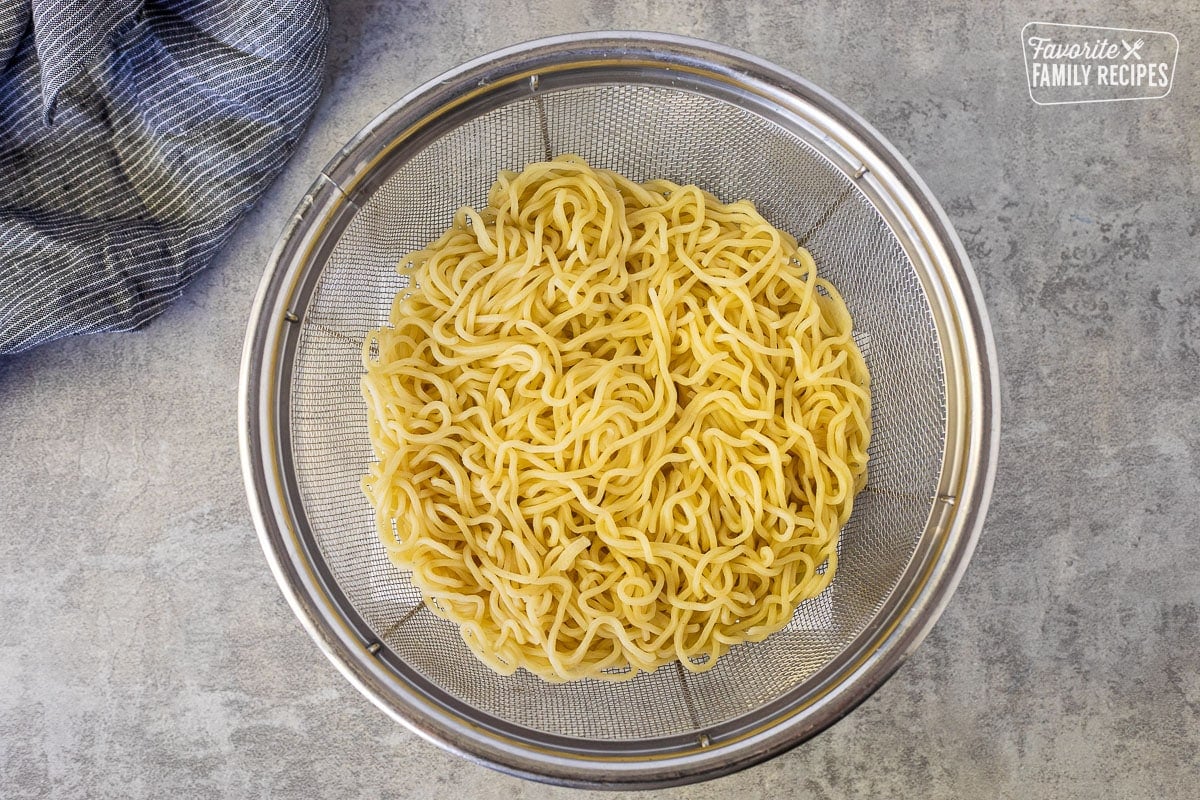
- Heat oil in a large wok or skillet over medium heat. Add celery and onion and sauté for about 1-2 minutes or until onions start to become soft and transparent. Add cabbage and sauté an additional minute.
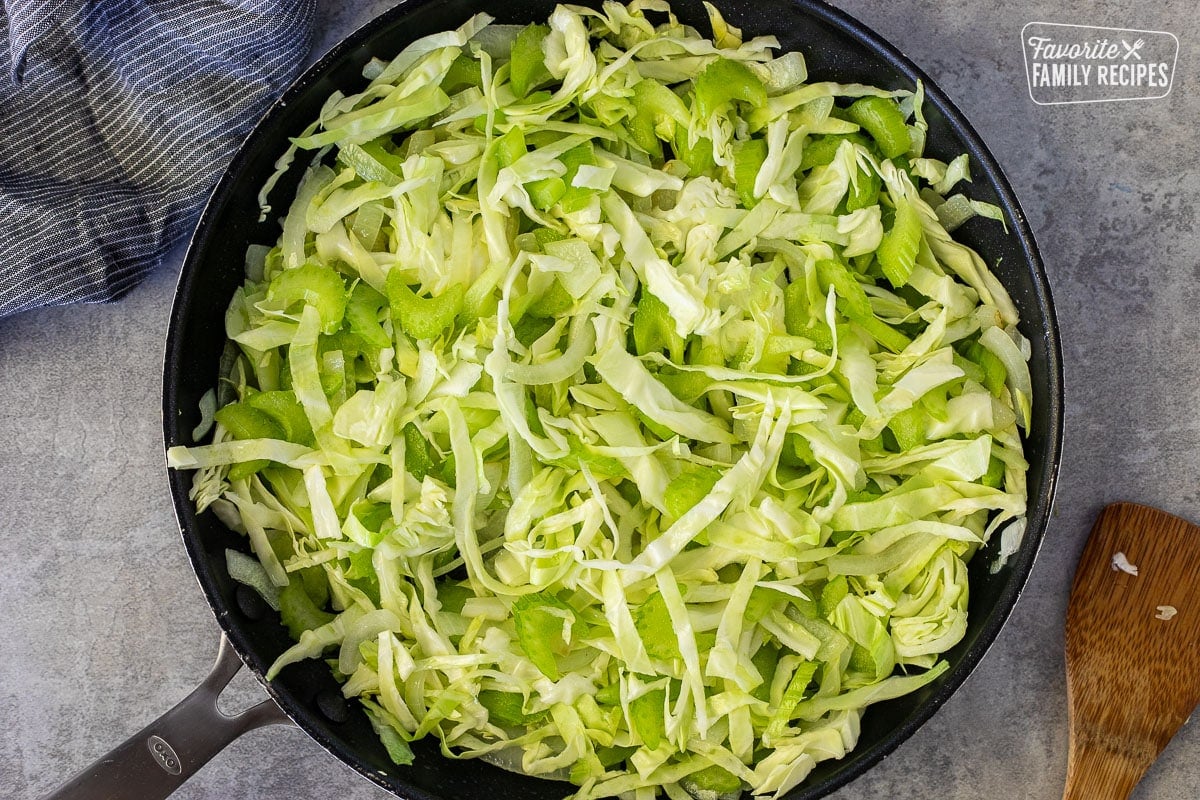
- Add noodles and soy sauce mixture to the vegetables. Stir-fry over medium-high heat for an additional 2-3 minutes or until noodles are heated through.

Notes
- In this recipe, you can add a shake or two of sesame oil to the vegetable oil to add a deeper flavor, but don’t overdo it! I am not including it in the recipe because the sesame oil flavoring can become overpowering really quickly if you aren’t careful. I have made it both ways (with and without sesame oil) and they both taste great.
- Don’t overcook the noodles. Overcooking them can cause them to break. You want them to be just heated through.
I also added in some fresh snow peas from the garden! It was perfect!
Great idea!!! yum!!! Thanks for sharing!
I’m so glad that I happened to stumble upon this website! Being sixteen, relatively new to cooking, and constantly busy with work, school and sports teams this is a quick and delicious recipe that I can cook for my family! I have never been to Panda Express, but if it tastes anything like this, I think I’ll check it out!
Wow, way to go– cooking for your family! I love that you have a passion for cooking at such a young age. Well done! 🙂
Hi im buying the list for this recipe to taste this weekend for for the official gathering next weekend. Ive been to s couple of asian markets for the yaki soba noodles & they constantly ask me dry or fresh? Im confused.. which one am I looking for?
Fresh!
So, so yummy! I just used maruchan ramen instead of the yakisoba (….they’re pretty much the same right?) I ended up using an entire head of cabbage to flesh it out a little for my bottomless pit of a husband. Anywho, thanks very much for the recipe, it is now one of my absolute favorites and helps with my Panda Express withdrawal! Great site, too 🙂
So glad you and your family liked it! Glad it worked with the ramen 🙂 we did it with spaghetti noodles last time and they were pretty good that way too! Thanks for the compliment!
Thank you for a great recipe. My girls LOVED it. Can’t wait to try Orange chicken.
So glad you liked it! We just made this again tonight too! 🙂 It is always a hit!
I have to laugh… My boyfriend really wanted us to try and make this for a date night, but the only noodles I had in my house were angel hair spaghetti noodles! Well, we used the rest of the recipe as listed, and just added the boiled spaghetti noodles at the end. Long story short… IT WAS STILL DELICIOUS! We loved it, and although it wasn’t true to Panda, it was scarfed down in no time. Thanks for the delicious recipe! I look forward to using many more of your recipes to keep him happy and well-fed after our wedding. What a wonderful site!
Thank you so much for that nice compliment!! haha I am glad you liked it with spaghetti noodles– I can honestly say I have never made them that way before but I am so glad they turned out! 😀
Hey guys ! I’m making this tomorrow for dinner with the orange chicken . How long does it take for this to bake ? Thanks guys !
You are making the Chow Mein right? You don’t bake it at all.. It doesn’t take long to heat everything up together. You only want it on the heat long enough to heat up the noodles
Cant wait to try this recipe looks so yummy!!
I can’t eat celery so I made mine with 2 or 3 green onions chopped, I also added one packet of beansprouts. Cooked these first in the oil then I added the noodles and then 1/3 cup of soy sauce, 1/3 cup of rice wine vinegar and about 3 tablespoons of brown sugar. I heated the sauce up first to dissolve the sugar then I added it to the Noodles and beansprouts.m It was AWESOME!!!!!! I also threw in some cooked chicen at the end…Soooooo good!!!
I am late to the party but fully endorse this recipe. Only recently tried Panda Express and was underwhelmed with their chow mein. Fiddled with this a little per other commenters’ suggestions: no soba noodles (in the MS Delta, are you kidding?) so used 6 oz cooked pasta, sautéed 12oz shrimp first, then onions-garlic-celery plus grated carrots, then a small bag of finely grated cabbage for slaw. When I added the noodles and shrimp I used 1 1/2 times the soy sauce mixture, plus a few drops of sesame oil and a couple of squirts of Sriracha. Topped with cashews. Yum. The nearest Panda Express is 100 miles away but we are content! Thank you!
Oh help. I just tried making this but my noodles came out rather gummy. I followed the recipe to a tee. Any ideas his to fix it?
Maybe it is the brand of yakisoba? It could have been you rinsed the noodles too long and all the oils came off. Some people have had success just using spaghetti or linguini noodles. That might help? I’m not EXACTLY sure what to tell you because we haven’t really had that problem before :S
Made it for my family tonight – they loved it! Even my picky eater! It was delicious – thanks for posting it.
The recipe is great! Thank you for sharing. Like many others who’ve commented previously, I substituted regular thin spaghetti or angel hair pasta instead of the noodles this recipe calls for. I’ve also used pre-packaged cole slaw (without the cole slaw sauce) for the veggies in this. My family loves it! 🙂
I noticed that Panda’s chow mien also has bean sprouts. Do you cook that at the same time as the cabbage?
I was looking for an easy low mein recipe and this was it. I made this last night and it was delicious!! So easy to make. I didnt use ginger because i had none and i used thin spaghetti because i couldnt find refrigerated noddles. I added oyster sauce and just a tiny amount of sesame oil. My whole family loved it. Served it with some orange chicken. Thanks for the recipe!!
This recipe is absolutely fantastic! I’m allergic to onions (I know- incredibly sad!), and so there are so many things that I would love to eat in restaurants, but cannot. Due to it, I’ve become a pretty great cook (if I say so myself), and modify. Simply omitting the onion was an easy fix, and my husband said he couldn’t taste the difference between mine and when he goes to the shop! Awesome! Thanks for posting!
Yay! I am so glad you liked it! Our sister, Emily, is allergic to onions too. You will find that all of the posted recipes by her are onion-free! Just so you know 🙂
I have to make this for my daughter. We have been fighting about the lo mein/chowmein name at Panda Express. She even took a picture to prove to me. They’re still wrong!!!!!! lol Looks delicious! And I can call it lo mein!!!
You can call it whatever you like, but the only difference between chow mein and lo mein is in how they are cooked. Chow mein means “fried noodles” and lo mein means “tossed noodles” (the hard, crunchy noodles are an American invention).
Can this work without ginger?
Of course… but it wouldn’t taste as good!
Oh my gosh. I’ve tried so many mock Chinese take out recipes in the past that just didn’t pan out and tasted no good, but THIS. This recipe is magic. Easy, cheap ingredients, easy to make, and easy to add stuff to. I used dollar store spaghetti and it was perfect. I’m still in shock at how good it was. Thank you based Erica. I will never starve at 1:10 am again.
Made it several times and it is delicious. Follow the recipe to the T!
Tastes a lot like panda. I love it and could eat it as a stand alone meal (although my DH would likely not go for it). 🙂